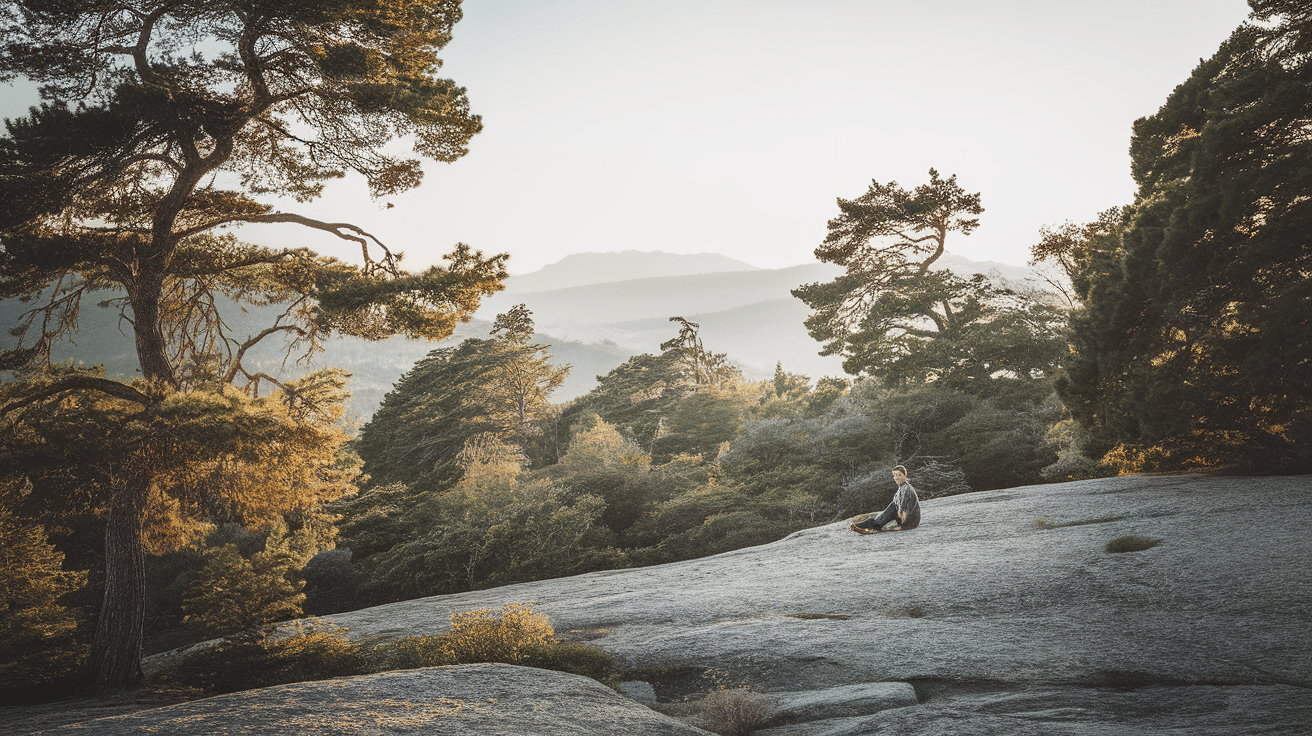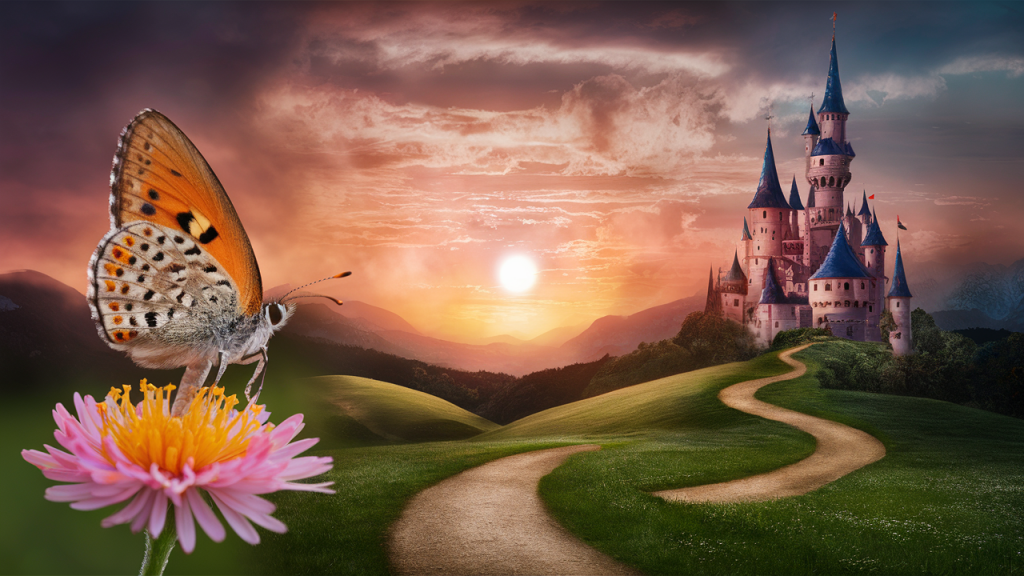In photography, getting the right composition can be tricky, especially when figuring out how to use the foreground, middle ground, and background. These three elements help create depth and balance in your photos, but many beginners aren’t sure how to use them effectively.
In this guide, I’ll explain each part and why it’s important. You’ll also learn how to combine them to make your photos more engaging and visually interesting.
By the end of this article, you’ll know how to avoid common mistakes and improve your photo compositions. Trust me, with some practice, you’ll start seeing a difference in your photos. Let’s learn and get you feeling confident about your photography!
What is Foreground?

The foreground is the part of the photo that is closest to you. It’s the area in front of the main subject. It’s usually in sharp focus, grabbing the viewer’s attention first.
For example, imagine a picture of a person standing on a beach. The foreground could be the sand and seashells right in front of you.
How Does Foreground Help Create Depth?
The foreground adds depth to your photo. Without it, the image can feel flat and uninteresting. Placing something in the foreground gives the viewer a sense of where they are in the scene. It creates a visual path that leads their eyes toward the subject.
Unique Features:
- Focus: It can guide attention to the main subject.
- Depth: It makes the photo feel three-dimensional.
- Interest: It adds visual layers and makes the scene more engaging.
Simply put, the foreground gives your photo context and helps tell a story.
What is Middleground?

When you’re taking a photo, the middle ground is the area between the foreground (the closest part of the photo) and the background (the farthest part). This middle section helps connect the front and back parts of your image.
Think of it as the bridge between what’s closest to you and far away. It gives depth to the photo, making it feel less flat and more dynamic.
Role of The Middleground in Balancing the Photo
The middle ground plays an important role in balancing the overall composition. Without it, the foreground and background might clash or feel disconnected. By placing elements in the middleground, you create harmony and guide the viewer’s eye smoothly through the image.
It can help fill empty spaces and make the photo feel complete. For example, if the foreground is filled with a subject, like a person or an object, the middleground can add landscape elements, like trees or buildings, to connect the front and back.
Unique Features of Balancing the Photo
- Improves flow: The middleground helps lead the viewer’s gaze from the front to the back, making the photo more natural.
- Creates depth: It prevents the photo from feeling too flat by adding layers.
- Prevents distractions: A well-composed middleground can distract attention from a busy background or too much space
What Is Background?

When we talk about the background, we’re referring to the things that are behind the main subject. It’s everything that helps set the scene or gives extra details. Think of it as the environment or context around the main focus.
For example, if you’re taking a photo of a person, the background could be the trees, the sky, or the street behind them. These things help tell the story of the photo but aren’t the main part.
How Can You Use the Background to Complement the Subject?
-
Keep it simple. Don’t let the background steal the show. If you’re photographing a person, make sure the background isn’t too busy. A calm background enables the subject to stand out.
-
Use it to tell a story. If you’re painting or drawing, the background can give extra meaning. For instance, a mountain in the background could show where someone is, giving more depth to the picture.
-
Think about colors. The background should match the mood of the subject. Bright, happy subjects go well with light, soft backgrounds, while dark subjects might work better with darker, richer backgrounds.
So, use the background, but remember, it’s there to complement the subject, not overpower it.
How to Combine Foreground, Middleground, and Background?
When I take a photo, I focus on combining the foreground, middleground, and background. These three elements work together to make the picture feel full and balanced.
1. Start with the foreground. This is what’s closest to the camera. It can be something simple like a rock or flowers. It helps guide your eyes into the picture.
2. Add a strong middleground. This is where the main subject usually sits. It’s the part of the photo that you want to stand out, like a person or a tree.
3. Finish with the background. The background should support the subject without distracting from it. A blurry background works well when you want the focus to be on the subject in the middleground.
Tips for a Balanced Photo
- Keep the foreground simple. Too much going on here can make the photo feel crowded.
- Make sure the middleground has the subject in focus. This is where the action should happen.
- Let the background add depth, but don’t let it compete with the subject.
Using These Elements to Tell a Story
The foreground, middleground, and background are like chapters in a book. They each add something to the story.
For example, a person standing on a mountain with flowers in the foreground, a clear sky in the middleground, and distant mountains in the background tells a complete story. You feel like you’re there with them.
So use these elements to create depth, guide the viewer’s eyes, and tell a stronger story.
Common Mistakes to Avoid
When I take photos, I’ve learned to watch out for a few mistakes. These can make a photo feel too busy or hard to understand.
1. Overcrowding the frame
It’s easy to add too much to the picture, but too many things in the frame can make it hard to know where to look.
- Keep it simple.
- Focus on one or two main things.
- Leave some space around your subject.
2. Distracting backgrounds or foregrounds
Sometimes, the background or foreground can take attention away from your subject.
- If the background is too busy, it pulls focus.
- A cluttered foreground can confuse the viewer.
Tip: Blur the background or choose something simple.
Avoiding these mistakes helps keep your photo clean and easy to understand. Keep it simple, and focus on what really matters.
Conclusion
In this article, we’ve talked about the foreground, middleground, and background. These three elements can make your photos more balanced and interesting. I’ve shared tips to help you use them well and avoid common mistakes.
Understanding how these elements work together will improve your photo compositions. With practice, you can expect to see big improvements.
Remember, the goal is to enhance your storytelling with these elements. So, keep practicing and experimenting with different compositions.
Don’t be afraid to try new things! Over time, you’ll create photos that feel complete and engaging. Keep learning, and soon it will feel natural.
Frequently Asked Questions
What Is the Difference Between Foreground, Middleground, and Background?
The foreground is closest to the camera, the middleground is where the main subject usually sits, and the background adds depth and context to the photo.
How Can I Make My Photos More Balanced?
To balance your photos, focus on using the foreground, middleground, and background effectively. Keep the frame simple and avoid overcrowding to maintain focus on the subject.
Should I Always Blur the Background?
Blurring the background can help keep attention on the subject, but it’s not always necessary. Use it when the background distracts from the main focus of the photo.
Can I Use a Busy Background Effectively?
A busy background can work if it complements the subject and doesn’t distract from it. Make sure it fits with the story or mood you’re trying to convey.
How Do I Know If My Photo Is Too Crowded?
If your photo feels busy or overwhelming, it might be overcrowded. Focus on the key elements and leave space for the subject to breathe.









